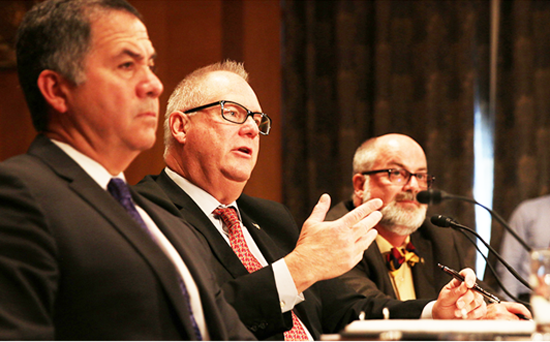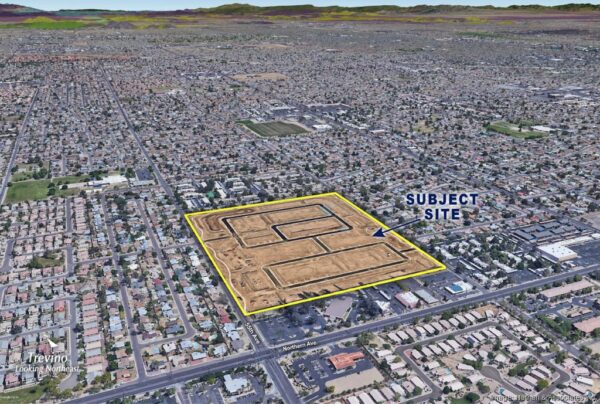
By Andres Guerra Luz | Cronkite News
While they agreed that the U.S. needs to secure its Southwest border, no one at a Senate hearing Tuesday appeared ready to say a wall along the entire border would be the only way to go.
The hearing by the Senate Homeland Security and Governmental Affairs Committee came the same day that the first bids were due from contractors for prototypes of President Donald Trump’s promised border wall with Mexico.
The request for bids from Customs and Border Protection called for companies that could design and build a “solid concrete wall,” as well as a separate bid called for wall prototypes made of different materials.
None of the lawmakers or witnesses at the Senate hearing rejected a wall entirely. But many were like Sen. Heidi Heitkamp, D-North Dakota, who noted that “there’s been no one who’s come before this body suggesting that we need to build a concrete wall completely across the border.”
Instead, witnesses and lawmakers discussed a combination of technology, fencing and personnel – in addition to a wall on certain stretches – to secure the border.
“We’ve got a lot of tools in our toolbox,” Sen. Tom Carper, D-Delaware, said at the hearing. “We need to be using them.”
David Aguilar, former U.S. Customs and Border Protection commissioner, said the top priority should be acquiring technology, with building a wall or fence and hiring personnel coming after that.
Aguilar said that integrated fixed towers allow 8 to 13 miles of border surveillance with the use of infrared technology and high-tech cameras. And in areas where those towers cannot be installed, like tribal property or geographically unstable land, tethered drones can stay up for weeks and keep watch over 7 to 8 miles, he said.
Physical barriers may need to be built in order for certain technologies to operate, but overall the approach depends on the particular stretch of border, he said.
“There is not a one-size-fits-all for the border,” Aguilar said.
Witnesses did say there are benefits to a physical barrier, including the fact that it delays people, giving Border Patrol agents time to react to immigrants who are trying to cross illegally.
Even if someone can make it over a wall or fence, they said, it gives border agents more time to catch those individuals than they would have without the barrier.
Ronald Colburn, former deputy chief of the U.S. Border Patrol, said the border fence made a difference in the Yuma sector where he was chief border patrol agent when construction on it started.
Before the fence, Colburn said, Yuma Border Patrol recorded 2,706 smuggler vehicles that drove through the border, but only captured or sent back 13 of them. As soon as the fence went up, he said, the number of attempted vehicle crossings fell to six, none of which got away.
Colburn called the Yuma sector “proof of concept” that the border can be secured, with over 63 miles of primary fence and 9 miles of secondary fence behind that. Some areas even have three lines of fencing, he said.
Where physical barriers wouldn’t work, border agents have employed vehicle barriers.
“That just gives an example of what is necessary,” Colburn told the panel.
Some senators raised concerns about the eminent domain costs of a border wall, and the effect a physical barrier could have on border communities.
But Sen. Steve Daines, R-Montana, said he is confident that Homeland Security Secretary John Kelly will use a “systematic” approach to securing the border that would address nuances of securing the southern border.
Daines noted a 40 percent drop in illegal border crossings in January and February of this year compared to the same time last year. That drop broke a 20-year trend of crossings going up in the first two months of the year, he said.
Aguilar said more recent numbers from border agencies show that the drop may be even steeper than the 40 percent cited by Daines.
“This has happened before,” Aguilar said. “When the U.S. stands strong and makes certain actions … that message resonates.”











